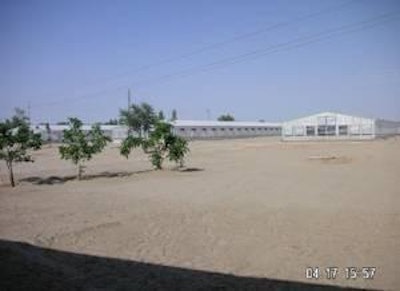
Pakistan's poultry industry has flourished over the last few decades. Now it is the country's second-largest industry, beaten only by textiles, with a turnover of some Rs 300 billion ($3 billion).
Only a few decades ago, commercial rearing, hatching and feedmilling were unknown in the country, with most chicken meat coming from backyard birds. Moreover, poultry were not necessarily kept for financial gain, rather it was something that was simply "done," whether profitable or not.
Today there are some 25,000 commercial poultry farms in the country and the sector is growing by approximately 10-12% per annum, providing employment for approximately 1.5 million families.
Beginnings
It was not until the 1960s that the government, conscious of the need for more white meat due to rising population levels, encouraged the development of a commercial poultry sector in the country.
In 1962, the first commercial poultry farm was established in the country by Canada's M/S Shaver's with the help of PIA (Pakistan International Airline), resulting in PIA Shaver. In its early stages, the enterprise was looked on favourably by the government and any poultry or related businesses were exempt from taxes. The first hatchery business was then established in Karachi by PIA Shaver as part of this initial development.
However, development of the industry was not problem-free. Disease has had a significant impact on its growth.
1990s
In the early 1990s, Gumboro disease hit broiler and layer flocks, resulting in high mortality levels and heavy losses. The impact of the disease forced the industry to address biosecurity and vaccination.
However, in the mid-1990s, Hydropericardium Syndrome (HPS) emerged in broiler and broiler breeder birds, as did Gumboro disease in broiler, layer and parent flocks in the northern areas of Abbotabad and Mansera, where the mortality rate reached 80% and the industry again suffered heavy losses.
Despite this high mortality rate, the following year saw a dramatic reduction in prices due to oversupply, with the price of chicken products falling to below the cost of production and resulting in further losses for farmers.
Prices remained low into 1997 and the problem was exacerbated by a ban on "marriage food" where guests are served many chicken dishes, resulting in a reduction of poultry product consumption of some 40%.
Last decade
In the late 1990s, however, the poultry industry entered a period of stability, with producers securing higher profit margins.
This decade has seen new investment and the implementation of environmental controls. There has been a shift away from traditional open houses to semi and completely closed automated houses, leading to the industry flourishing up until 2004.
In 2004, however, avain influenza hit the southeast of the country and the industry was hit hard by the public turning away from poultry products. Restrictions on exports were also highly detrimental.
The Pakistani market remains unstable; swinging between price spikes and periods when poultry meat is sold below cost of production but despite, or perhaps because of, its difficulties, the industry is one of the most organised agricultural sectors in the country. And despite impressive growth levels, poultry production in Pakistan can be expected to carry on growing.
Per capita poultry meat production currently stands at only 7kg, compared with 41kg in developed countries. Annual consumption of eggs, at 60-65 per head, is way below the average for developed markets, which stands at over 300, meaning there is still great scope for the home market to increase its consumption levels.

















